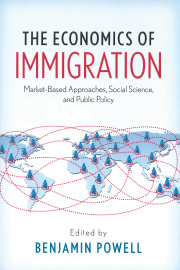Defense Secretary Ash Carter’s decision to open all combat positions to women has led many to ask whether Selective Service registration should be expanded to include women too. The answer is no. Selective Service should be abolished altogether. A military draft may lower the government’s cost of going to war, but it raises the cost to society as a whole.
Currently all 18-to-26 year-old-males are required to register for Selective Service. These registrations would facilitate the conscription of men into the military if the draft were ever reinstated. A 1981 court case ruled that a male-only Selective Service is constitutional since women were barred from combat roles and the point of the draft would be to enlist more combat troops.
But now that the defense secretary is allowing women into combat roles, the constitutionality of a male-only draft is in question, and the House and Senate armed services committees plan to consider whether women need to be included.Reps. Peter DeFazio (D-Ore.) and Mike Coffman (R-Colo.) think Selective Service should be abolished because, with reinstatement of a draft unlikely, the agency’s budget of $24 million and staff of 130 are a waste of resources. But these costs are a drop in the bucket compared to the unnecessary costs a draft would create.
In a market economy the price system channels labor to its highest valued uses. When government meddles with the price system it misdirects and wastes labor. Since a draft relies on force to attract personnel, it significantly interferes with the price system.
An all-volunteer military, like our all-volunteer groceries, trucking industry, schools, and medical profession, uses the price system to attract the best-suited employees. Only mutually beneficial exchanges take place in labor markets because both employers and potential employees are free to turn down offers.
Employers offer salaries based on the skills the employees have and the value they can create. The professional military offers differential pay based on rank, experience, special skills (e.g., flight pay), and job risks (combat pay). Potential employees evaluate these salaries and compare them to how much they could earn in their best civilian alternative. They also evaluate nonmonetary factors, which in the case of the military could involve pride and patriotism.
The all-volunteer approach ensures that only the best-suited people end up in the military. A draft does the opposite. It indiscriminately compels employment in the military regardless of an individual’s skills and values.
Consider an un-athletic but smart 22-year-old software engineer earning $100,000 a year creating programs that improve people’s lives. If drafted, he would earn less than $19,000 performing a job he’s not particularly good at.
While the price the government pays is only $19,000, society loses all of the value he could create producing software. Thus the true cost of this soldier to society is roughly $100,000, not $19,000.
The draft also imposes a large in-kind tax on a random selection of 18-to-26-year-olds equal to the difference between their civilian and military earnings. The sum of these in-kind taxes is always greater than the amount that would have been needed to get an equal number of people to volunteer because a draft arbitrarily selects some individuals who could create more value elsewhere.
The time is ripe to abolish Selective Service. An all-volunteer force is more efficient, cheaper, and more consistent with the principles of a free society.











